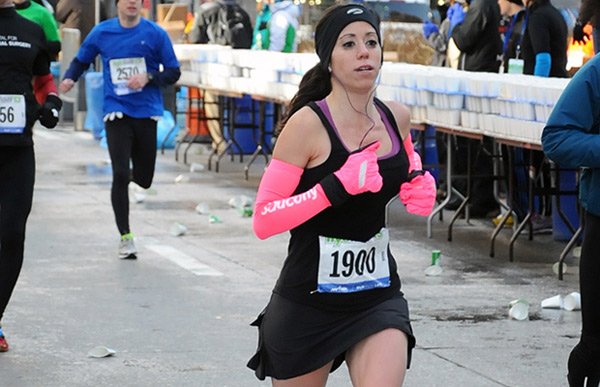
For some runners, a marathon is not enough.
Participation in so-called ultramarathons — defined as any distance beyond the standard 26.2-mile marathon — has grown exponentially in recent years. The number of runners who finished ultra-length races in North America increased from 15,500 in 1998 to 63,530 in 2012, according to UltraRunning Magazine. Despite its popularity, however, little is known about the health effects of this intense form of exercise.
To learn more about the health of ultrarunners, Eswar Krishnan, MD, assistant professor of medicine at the Stanford University School of Medicine, teamed up with Martin Hoffman, MD, a professor of physical medicine and rehabilitation at UC-Davis and an avid ultrarunner. In November 2011 they launched the Ultrarunners Longitudinal Tracking Study. Baseline findings of the study will be published Jan. 8 in PLOS ONE.
More than 1,200 ultrarunners answered a web-based questionnaire about the competitions they entered and their training regimens, general health and running-related injuries over the previous 12 months. The researchers plan to follow this cohort of runners for 20 years.
Krishnan, a clinical epidemiologist, believes that studying the effects of extreme exercise could have broader applicability. “It will help us to understand how much exercise is optimal, how much recreational activity is appropriate and beneficial, and if there is a reason not to push your body beyond a certain point,” he said.
Not unexpectedly, baseline statistics indicate that ultrarunners are healthier than the overall U.S. population. During the previous year, study participants missed an average of just two days of work or school because of illness or injury, compared with four days for the general population. Most of their visits to health-care professionals, about 64 percent, were for exercise-related injuries, not for diseases that would indicate chronic deterioration.
More than three-quarters of the ultrarunners reported an exercise-related injury in the prior year, while 65 percent had lost at least one training day to injury. Comparing the profiles of injured runners with those who had avoided injury revealed an interesting trend: Injuries appeared to be more common in younger, less experienced runners.
“It’s a bit like drivers. Young drivers are at higher risk of car crashes than older people. So similarly, people who have recently started running are much more likely to suffer injuries than veteran ultramarathoners,” Krishnan said.
With the next questionnaire, to be sent in early 2014, Krishnan and Hoffman hope to investigate whether particular knowledge or adaptations help to protect more experienced runners from injury.
As in all runners, most injuries among study participants involved the knees and other parts of the lower extremities. Notably, just 3.7 percent of injured ultrarunners reported stress fractures, small cracks in bones that can arise from repeated application of force over time. Stress fractures may be less frequent in ultrarunners than in other runners; studies have shown they make up 5 to 16 percent of all injuries in runners.
However, stress fractures in the foot appear to be especially common in this group, accounting for 48 percent of all reported stress fractures. Hoffman and Krishnan speculate that running on uneven terrain may be the reason why.
Another striking, yet anticipated, finding was a high incidence of asthma and allergies. While only 7 to 8 percent of the overall U.S. population has each of these conditions, 11 percent of ultrarunners reported asthma, and 25 percent reported allergies. The study authors believe that allergies may develop simply as a response to spending more time outdoors, leading to more contact with pollen and other allergens. Krishnan expects that, as in marathon runners, most of the asthma in the study participants is related to allergies, but he plans to follow up on this in subsequent questionnaires.
Other valuable baseline findings from the study include statistics on hospitalizations after competitive ultramarathon events. Five percent of participants had been hospitalized after a competitive event in the past year, and more than half of these incidents were reportedly due to dehydration, electrolyte disturbance or heat exhaustion. About 20 percent were for fracture or dislocation injuries. Krishnan hopes these findings can help improve the education of runners and medical personnel about these dangers, but cautioned that falls during ultramarathons cannot be fully prevented.
The psychological profiles of ultrarunners are of particular interest to the researchers and will be a focus of the upcoming questionnaire. Krishnan and Hoffman are collaborating with several sports psychologists to study what drives these runners to such an extreme level of competition. “Understanding what motivates ultrarunners could be useful for encouraging others to meet minimum levels of exercise to enhance health,” Hoffman said.
The study done by Stanford University Medical Center.